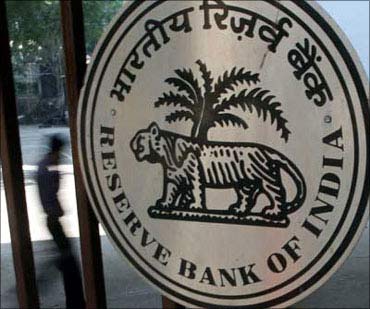 | « Back to article | Print this article |
Indian IT-BPO sector: What to expect in 2011
Over the years, the Indian IT-BPO industry has matured from offering non-core activities. However, there is a huge global market that is yet untapped.
The level of the opportunity in hand can be gauged from the fact that India (domestic + exports) accounted for approximately 5 per cent of worldwide technology products and services related spend of $1.5 trillion in 2009.
This underlines the immense growth opportunities for the industry players to create innovative service models and broaden its geographical reach, says Dun & Bradstreet in a report that gauges the Indian IT-BPO industry outlook for 2011.
In the future, the industry is expected to generate an increasing share of revenues from the emerging segments such as SMB, engineering and infrastructure management by offering cost-effective delivery options such as pay-per-use and outcome based pricing models.
The Dun & Bradstreet report dwells on nine points that it has highlighted.
Click NEXT to read on . . .
Indian IT-BPO sector: What to expect in 2011
1. Consolidation activity is likely to pick up
The Indian IT-BPO industry is expected to adopt the inorganic growth route in order to widen their service offerings and enter new geographical markets.
Several third party and captive BPO units are likely to increasingly acquire small size companies to ramp up revenue, acquire clients, and expand business segments and geographical reach.
Consolidation will also be driven by international M&A deals, propelled by robustness of the Indian players.
The Indian IT-BPO industry has been seeing a spurt in consolidation in recent times, with deals such as Sutherland Global Services acquisition of Adventity Global Services, Hinduja Global Solutions acquisition of a United Kingdom-based customer relationship management company, Careline Services, and this trend is expected to continue in the near future.
Click NEXT to read on . . .
Indian IT-BPO sector: What to expect in 2011
2. Cloud computing will be the next big wave for Indian IT-BPO industry
Cloud computing is expected to reshape the Indian IT market by generating new opportunities for the IT vendors and driving changes in traditional IT offerings.
This service offers immense opportunity to penetrate the SMB sector and offer innovative solutions by providing them an equivalent IT infrastructure, which they could otherwise not be able to afford.
Several big high-tech companies such as Microsoft are now adopting the cloud computing technology to widen their market share.
TCS has also launched various models within cloud computing services targeting the large number of SMBs in India.
Click NEXT to read on . . .
Indian IT-BPO sector: What to expect in 2011
3. RIMS is set to emerge as a promising opportunity
Remote Infrastructure Management Services is touted to be a big market for Indian IT companies in the near future.
The IMS segment is progressively moving towards a remote delivery model where services are delivered by vendors and captives from low-cost locations.
As per the comprehensive study conducted by Nasscom and McKinsey, the global RIMS market is estimated to be $96-104 billion, out of which nearly 70-75% of the infrastructure management roles can be offshored.
Given its strength in offshore delivery of services, India is well positioned to capture a substantial share of this RIMS opportunity.
Click NEXT to read on . . .
Indian IT-BPO sector: What to expect in 2011
4. SMBs are expected to emerge as a significant market
Indian Small and Medium Businesses have realised the long-term benefits of IT implementation in terms of increased productivity and are increasingly adopting IT solutions.
During 2009, expenditure on IT by SMB segment was about 30% of the total IT spends valued at over Rs. 300 billion. IT vendors have identified SMBs as the growth driver of the future and are taking steps to address them more effectively.
They are offering tailored-made easy to implement IT solutions and delivery models to SMBs. For instance, Microsoft has started to offer its ERP application to SMBs through the SaaS model.
Wipro has also collaborated with Microsoft to deliver ERP software through SaaS model for an auto parts supplier.
Click NEXT to read on . . .
Indian IT-BPO sector: What to expect in 2011
5. Increased government IT spending will spur growth in the domestic market
Service providers are also expected to sharpen their focus on the domestic market to tap the imminent growth opportunities offered by the booming Indian economy.
The rapid growth in the domestic market is likely to be driven by major government initiatives such as increased spending on e-Governance and increased thrust on technology adoption/up-gradation across various government departments to bridge the gap of digital divide.
The GoI has enacted a national e-Governance Plan (NeGP) which creates a big opportunity for the IT vendors to create an effective partnership. It has separately allocated $9 billion for investment in NeGP projects till FY14.
Click NEXT to read on . . .
Indian IT-BPO sector: What to expect in 2011
6. Shift in focus from BFSI vertical to other emerging verticals
The BFSI vertical has been the mainstay of the Indian IT-BPO industry. However, it was one of the worst hit segments due to the impact of global financial crisis.
In 2009, the BFSI sector observed a decline of around 5% after witnessing a below average growth rate of 3.6% in 2008.
Consequently, IT vendors, in order to de-risk their business model, have increased their focus on other verticals such as government, healthcare, retail and utilities. In the last few years, these sectors have shown signs of increasing IT expenditure.
Growth in these emerging verticals is expected to be substantially faster than the core verticals.
Click NEXT to read on . . .
Indian IT-BPO sector: What to expect in 2011
7. Diversifying from core geographic markets
Indian IT-BPO companies are expected to diversify their business from core markets such as the US and UK as these markets were adversely affected by the global financial crisis leading to a decline in their overall IT spends.
Over the last couple of years, India's export share to the US has declined sharply from around 68% in FY04 to 61% in FY10.
On the other hand, the Indian IT companies have begun to explore opportunities offered by other growing markets such as Mexico, Ireland, Netherlands, Philippines and Brazil.
Though these flourishing markets are presently small, they are expected to the drive growth in future. In addition, by concentrating on these markets, businesses can diversify their risks across regions.
Click NEXT to read on . . .
Indian IT-BPO sector: What to expect in 2011
8. Ceasing of tax benefits for STPI impacts small players
Software Technology Parks of India have played a vital role in fostering growth of the Indian IT-BPO industry. The uncertainty ruling over continuation of tax holiday after March 2011 could slow down future expansion proposals.
Large companies would be able to alleviate the tax burden arising from the expiry of tax holiday by moving into SEZs.
However, small companies, which form the bulk of the companies registered with STPI, will find it hard to survive, as they are still struggling post-global recession and do not have the financial resources to face this challenge.
Click NEXT to read on . . .
Indian IT-BPO sector: What to expect in 2011
9. Rural BPOs will make their presence felt
Indian BPO companies are slowly moving towards rural areas to set up delivery centres due to rising attrition rates in urban areas and lower cost of operations in rural areas -- which is also supported by growing real estate construction in rural area.
As per Nasscom, as on Feb 2010, about 35 rural BPO centres employed more than 5,000 people across the country.
Rural BPOs are also gradually moving up the value chain in terms of service offerings from basic data management tasks to content creation and validation. 2011 could well be the year in which rural BPO operations come of age.









